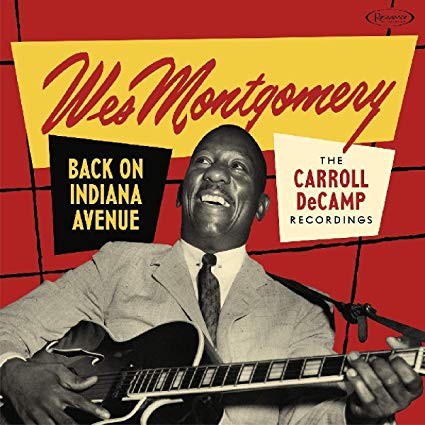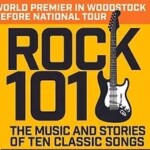Artist: Wes Montgomery
Album: Back on Indiana Avenue: The Carroll DeCamp Recordings
Label: Resonance Records
Release Date: 4.13.19

At least one mystery has been solved. The buried treasure of understated jazz guitar genius Wes Montgomery that was partially unearthed on 2012’s Echoes of Indiana Avenue was actually culled from previously unissued material stashed away by well-respected Indiana musician and arranger Carroll DeCamp, now deceased. Nobody knew its provenance back then. That case is now closed.
An even more engrossing and intriguing detective story, the two-hour, 22-track double-CD set Back on Indiana Avenue: The Carroll DeCamp Recordings is also full of secrets. It’s unclear exactly where these performances—some possibly recorded live and off-the-cuff by DeCamp, others by an honest-to-goodness engineer—took place, whether in a studio, a club or even a private party. The quality varies, as does the personnel. And determining who is playing in these settings with Montgomery is also tricky, because DeCamp left no notes on the subject. Knowledgeable sleuths such as jazz scholar Lewis Porter and the late educator and musician David Baker have made some educated guesses, postulating from scrupulous research and analysis and close listening that brilliant pianists John Bunch, Earl Van Riper and Carl Perkins and Montgomery’s brothers, the talented bassist Monk and noted ivories-tickler Buddy, all jumped into the fray at some point or another.
The consensus is these once lost Wes Montgomery transmissions were laid down in the mid- to late-1950s, just prior to Montgomery signing with the esteemed Riverside label and rocketing to fame. Many are embryonic versions of his best-known works that, nevertheless, reveal a remarkable maturity and cleverness, his early forays into hard bop and post-bop with hints of the blues and deep soul signaling the arrival of a sublime talent. They deserve this lavish, deluxe-edition packaging, specially pieced together for Record Store Day 2019 with an assortment of vintage photos to rummage through. Packed with information, the set is a bulging suitcase stuffed with Porter’s detailed examination of the collection and interviews with those who involved in the salvage work, plus insightful talks with Montgomery’s rightful heirs in guitarists George Benson and John Scofield. And it shines a much-needed light on DeCamp’s life and the role he played here, as well as the whole Indiana jazz scene of the time.
It was Benson who remarked that upon first hearing Montgomery’s signature tone—so pristine and distinctive, a burnished alchemy of mellow gold and shiny chrome—he immediately pulled over to the side of the road. Expect to respond similarly to Montgomery’s stylish and elegant, yet industrious, reading of “Stompin’ at the Savoy” and the hustle and bustle of “Between the Devil and the Deep Blue Sea,” the latter seemingly an excited, joyous negotiation of frenzied instrumentation fighting to be heard over clinking glasses and laughter that segues into the refined and rather pensive “Easy Living.” All three are highlights of Disc 2, where Montgomery sits in with Nat “King” Cole-style trios of guitar, bass and piano and the skittering interplay of Montgomery’s unassuming, slippery and inventive maneuvers with the fireworks of his colleagues results in beautifully controlled chaos. His playing is so classy and tasteful, generously offering space for others to roam freely. They reward his gestures with their dazzling chops.
Step lively into Disc 1, almost evenly split between Montgomery joining piano quartets of guitar, piano, bass and drums and organ trios and sextets, and the ebullient bounce and start-stop dynamics of “Four on Six” whisks you away. The sensual, bossa nova massage and flutter of “Mr. Walker” is soothing and breezy, but never dull, leading into a nocturnal and reflective “’Round Midnight” that is artfully rendered. More unpredictable, a sly remake of Gil Evans’ “So What,” the magnificent entryway into Miles Davis’ masterpiece Kind of Blue, rushes in, only to have the group settle down and turn it inside out. The nimble movements and stop-on-a-dime changes of directions on “It’s You or No One” are dizzying, while “Nothing Ever Changes My Love for You” is slowly and meticulously kneaded into shape. And the horns of “Sandu” march in audaciously, as if taking lead of a New Orleans’ second line parade, before those of a mournful “Whisper Not” drop to their knees in prayer. This is a house of worship after all.
—Peter Lindblad







Be the first to comment!